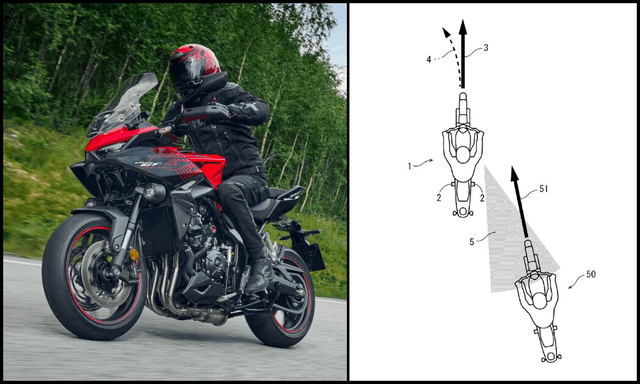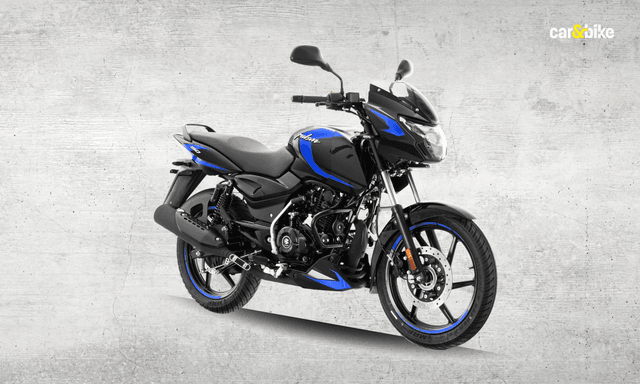Supreme Court Bans BS III Vehicles: Ten Things For You To Know
Siddharth Vinayak Patankar
1 min read
Mar 30, 2017, 03:04 AM

Key Highlights
- The sale of BS III vehicles has been banned post 1st April 2017
- Industry had petitioned to relax the deadline on 20th March 2017
- 8.24 lakh vehicles have been affected due to this ban
The Supreme Court of India banned the sale of any Bharat Stage III or BS III vehicles across India, with effect from the 1st of April 2017 and we have already told you how the auto industry feels about the ban and the consequent discounts on unsold BS III two-wheelers.This is in accordance with the government deadline to adopt the new emissions cycle pan-India. The fact remains that the companies are doing whatever they can to sell the BS 3 versions of vehicles and in fact from what we have heard the deals are working as dealers expect 90 per cent of the stock to be sold. Now here’s everything else you need to know about the ruling of the apex court:
- The Supreme Court has directed the Indian automobile industry to stop the sale and registration of any Bharat Stage III vehicle from April 1 2017. This in effect puts an end to the controversy around the topic that has been raging since January this year.
- India’s top court has asked the affected vehicle manufacturers to use the remaining days in March to try and sell any inventory of the BS III vehicles. Some of the manufacturers have said it may be impossible to do so, and will now seek to either recall and upgrade these vehicles or seek to export them to markets where existing emission norms would still make them viable.
- The Court has said ‘the health of the people is far, far more important than the commercial interests of the manufacturers or the loss that they are likely to suffer.’ The move has been celebrated by environmentalists and the EPCA – which had even called for a meeting with the auto industry in October 2016 to assess the industry’s readiness to move to BS IV across India.
- After the industry had petitioned the court to relax the deadline, on March 20 2017 it had asked auto players to submit details of the BS 3 inventory they held collectively. Numbers submitted by the SIAM (Society of Indian Automobile Manufacturers) show that it stands at 8.24 lakh vehicles (0.96 lakh Commercial Vehicles, 6.71 lakh Two Wheelers, 0.40 lakh Three Wheelers and a mere 0.16 lakh Passenger Cars.)
- While the top 13 cities in the county had moved to BS IV in 2010, the rest of India needed migrate to the new norms in phases – the last of which sees complete adoption by April this year.
- The government notification issued in March 2014 had also stated that any ‘new models’ coming to market will need to be BS IV compliant if launched after April 1 2016. The automobile industry has delivered on that front, and we have seen the introduction of many new BS IV compliant car and bike models in 2016 as a result. The notification further stated that all exiting models must also transition to BS IV by April 1 2017 – the root of today’s ruling. Some players like Maruti Suzuki, Hyundai, and Bajaj had moved their entire portfolio (including existing models) to BS IV well before the second deadline.
- Citing an inventory pile-up in its dealer and distributor pipeline, many others in the auto industry had asked for an extension of the deadline on sales of already manufactured BS III vehicles – while assuring that production of said vehicles would end by March 31 2017. The court refused to provide this caveat and has now asked them to honour the letter of the law and carry out a complete transition – which of course also means stopping the sale and registration of such cars, bikes, three wheelers and trucks.
- The ban on BS 3 vehicles is on the manufacture and sale of new vehicles – and in no way affects vehicles you may have already purchased and are currently using. This also applies to vehicles that may be booked and invoiced, and not as yet delivered to actual individual buyers.
- Car and bike owners are also free to sell their existing BS III vehicles in the second-hand market, and also buy a used BS III vehicle. The ban is only on brand new vehicles.
- A pan-India transition to BSIV has also meant an upgrading of fuel quality from BS III to BS IV. Since the latter is now available across India, you need not worry about using BS IV fuel in older vehicles. This has been tested and proven already in the case of the 13 big cities like Delhi, Mumbai, Chennai, and Bengaluru that had moved to BS IV in 2010.
Latest News
 car&bike Team | Dec 28, 2025Nissan Gravite MPV Spied Testing Yet Again Ahead Of Jan 2026 DebutNissan’s subcompact MPV will share its underpinnings with the Renault Triber.1 min read
car&bike Team | Dec 28, 2025Nissan Gravite MPV Spied Testing Yet Again Ahead Of Jan 2026 DebutNissan’s subcompact MPV will share its underpinnings with the Renault Triber.1 min read car&bike Team | Dec 27, 2025Honda Patents Steering Assist Tech For MotorcyclesHonda patents a steering assist concept that subtly intervenes during blind-spot risks.1 min read
car&bike Team | Dec 27, 2025Honda Patents Steering Assist Tech For MotorcyclesHonda patents a steering assist concept that subtly intervenes during blind-spot risks.1 min read Jafar Rizvi | Dec 27, 2025Listed: Car Manufacturers That Will Hike Prices From January 2026Based on the announcements made so far, the price increase across car models is expected to range between 2 and 3 per cent.3 mins read
Jafar Rizvi | Dec 27, 2025Listed: Car Manufacturers That Will Hike Prices From January 2026Based on the announcements made so far, the price increase across car models is expected to range between 2 and 3 per cent.3 mins read Jaiveer Mehra | Dec 26, 2025India-Spec New Renault Duster Teased Ahead Of Jan 26 DebutA new teaser video provides brief glimpses of the upcoming all-new SUV which seems to get some notable styling differences over its global sibling.1 min read
Jaiveer Mehra | Dec 26, 2025India-Spec New Renault Duster Teased Ahead Of Jan 26 DebutA new teaser video provides brief glimpses of the upcoming all-new SUV which seems to get some notable styling differences over its global sibling.1 min read Jaiveer Mehra | Dec 26, 2025New Mahindra XUV 7XO Teaser Confirms 540 Degree CamerasLatest teaser video confirms the SUV will get the new 540 degree camera set-up from the XEV series as well as a few other features.1 min read
Jaiveer Mehra | Dec 26, 2025New Mahindra XUV 7XO Teaser Confirms 540 Degree CamerasLatest teaser video confirms the SUV will get the new 540 degree camera set-up from the XEV series as well as a few other features.1 min read car&bike Team | Dec 24, 2025Updated Bajaj Pulsar 150 Launched At Rs 1.09 Lakh: Gets LED Lighting, New ColoursThe Pulsar 150 is offered in three variants with prices topping out at Rs 1.15 lakh (ex-showroom).2 mins read
car&bike Team | Dec 24, 2025Updated Bajaj Pulsar 150 Launched At Rs 1.09 Lakh: Gets LED Lighting, New ColoursThe Pulsar 150 is offered in three variants with prices topping out at Rs 1.15 lakh (ex-showroom).2 mins read
 Jafar Rizvi | Dec 24, 2025MG Windsor EV 38 kWh Long-Term Report: IntroductionThe Windsor EV has joined our garage, and before it settles into daily duty, I took it out to get a sense of what living with an electric car is like.4 mins read
Jafar Rizvi | Dec 24, 2025MG Windsor EV 38 kWh Long-Term Report: IntroductionThe Windsor EV has joined our garage, and before it settles into daily duty, I took it out to get a sense of what living with an electric car is like.4 mins read Seshan Vijayraghvan | Dec 23, 20252026 Kia Seltos Review: Formula Is Spot On, But Is The Timing Right?The 2nd-gen Kia Seltos has arrived, but it has the challenge of facing strong rivals like the Victoris and Sierra. The question is simple - Does it still have what it takes?9 mins read
Seshan Vijayraghvan | Dec 23, 20252026 Kia Seltos Review: Formula Is Spot On, But Is The Timing Right?The 2nd-gen Kia Seltos has arrived, but it has the challenge of facing strong rivals like the Victoris and Sierra. The question is simple - Does it still have what it takes?9 mins read car&bike Team | Dec 26, 2025Tata Punch EV Long-Term Second Report: Highway Performance, Pros & ConsAfter a week of living with the Tata Punch EV Long Range—including a proper Mumbai-Nashik highway test—we've learned what this little electric SUV is really made of.1 min read
car&bike Team | Dec 26, 2025Tata Punch EV Long-Term Second Report: Highway Performance, Pros & ConsAfter a week of living with the Tata Punch EV Long Range—including a proper Mumbai-Nashik highway test—we've learned what this little electric SUV is really made of.1 min read Seshan Vijayraghvan | Dec 22, 20252026 Tata Harrier & Safari 1.5 Hyperion Review: By The Power Of Petrol!The new Tata Harrier and Safari petrol packs a new 1.5-litre TGDI Hyperion engine, but is it an ideal alternative to the diesel version?7 mins read
Seshan Vijayraghvan | Dec 22, 20252026 Tata Harrier & Safari 1.5 Hyperion Review: By The Power Of Petrol!The new Tata Harrier and Safari petrol packs a new 1.5-litre TGDI Hyperion engine, but is it an ideal alternative to the diesel version?7 mins read Bilal Firfiray | Dec 19, 2025Maruti Suzuki e-Vitara Review: Worth The Wait?After a long wait, the first-ever electric Maruti Suzuki is here. It’s the e-Vitara, and it comes with a few promises. But arriving this late, is it worth the wait? Or is it a case of too little, too late?9 mins read
Bilal Firfiray | Dec 19, 2025Maruti Suzuki e-Vitara Review: Worth The Wait?After a long wait, the first-ever electric Maruti Suzuki is here. It’s the e-Vitara, and it comes with a few promises. But arriving this late, is it worth the wait? Or is it a case of too little, too late?9 mins read






















































































































